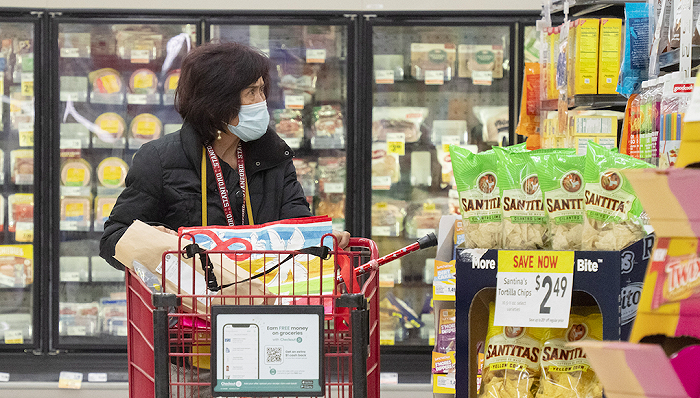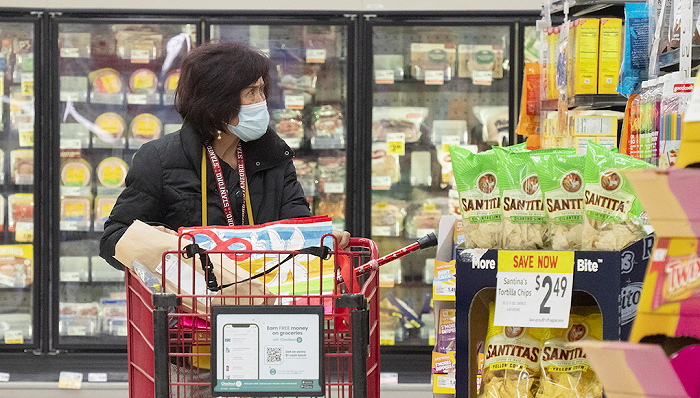On March 12th local time, the US Department of Labor released data showing that the Consumer Price Index (CPI) in February fell 3.2% year-on-year, higher than the expected 3.1% in shopping malls and an acceleration of 0.1 percentage points from January; Excluding food and power costs, the year-on-year increase in CPI has fallen from 3.9% to 3.8%.

Analysts have shown that the strengthening of oil prices was the main driver of the year-on-year increase in US CPI in February. Looking ahead, although inflation trends remain unchanged, stickiness remains stubborn and the risk of a rebound is still present. This has also lowered the urgency of the Federal Reserve raising interest rates, and the first rate hike may be postponed to the second half of the year.
Xiong Yuan, Chief Economist of Guoshuai Securities, stated in his research report that although the overall year-on-year decline in US CPI and focus CPI is more due to base reasons. If annualized over a three-month period, the current CPI and focus CPI would be 4.0% and 4.2% respectively, and the focus CPI calculated using this method has shown a continuous rebound since August 2023. In addition, year-on-year housing prices in the United States have bottomed out and risen since June 2023. According to historical discipline, the year-on-year decline and rebound of the CPI residential sub item can be seen by the end of 2024 or early 2025, making it significantly more difficult for inflation to further decline.
“Overall, the danger of secondary inflation in the United States is not low.” Xiongyuan said that if secondary inflation does survive, unless the US economy weakens significantly, the timing of the Federal Reserve’s first interest rate hike can be postponed, and the magnitude of the hike can also exceed expectations. At present, the probability of interest rate hikes in March and May is already very low. Whether interest rates can be raised in June and the magnitude of the annual rate hike depends on the data presented.
Lu Zhe, Deputy Director of Park Chuo Securities Research Institute, also stated that the US CPI continued to exceed expectations in February, indicating that inflation stickiness remains stubborn. In addition, the slow pace of inflation in residential areas has an unexpected impact on the overall decline in CPI.
“The stickiness of US inflation from January to February slowed down the pace of inflation rhetoric, lowered the adequacy of the Federal Reserve’s interest rate hikes, and thus narrowed the space for the Fed to raise rates,” Lu Zhe said.
Last week, the President of the Federal Reserve, Jerome Powell, stated in his semi annual monetary strategy statement to Congress that the Federal Reserve is seeking more confirmation that inflation is continuously moving towards the goal of 2%. He expressed that the current strategic interest rate can have reached the peak of this contraction cycle, and if the economy grows as expected, it may be appropriate to start tightening the strategic limit at some point this year.
Yan Xiang, Chief Economist of Huafu Securities, stated that from the beginning of the past eight rounds of Fed rate hikes, the Fed does not need to compare inflation to 2% before starting to raise interest rates. The key is to see clear signs of economic cooling, especially in the manufacturing purchasing managers index (PMI) and non-agricultural industries, which have significantly cooled down. At present, we still need to look forward to it.
Yan Xiang estimates that there is a high probability that the year-on-year CPI in the United States will continue to decline in the future, and it can rise to the range of 2.4% -2.5% by August. If the subsequent inflation increase is lower than expected, the interest rate hike node will be postponed until July or later in September.
He Ning, Chief Analyst of Microeconomics at Open Source Securities, still believes that the Federal Reserve will start its first interest rate hike in June. However, the pace and magnitude of future interest rate hikes will be relatively flexible, and the overall magnitude will not be significant.
He stated that based on the data from February, the current inflation process is in a gradual upward trend. Although there is a certain gap between the Federal Reserve’s target range survival, the joint performance of Powell does not need to be compared to inflation rising to 2% before starting to tighten the monetary strategy. The Federal Reserve’s confidence in interest rate hikes is not far away. In addition, the February non-agricultural data showed that the supply-demand relationship in the labor market is gradually improving, which means that support for inflation levels will gradually slow down.
“As long as there is no significant turbulence in the inflation process, the Federal Reserve may be more inclined to stop ‘precautionary interest rate hikes’ to prevent the economy from continuously inflating at a limited level of interest rate. Under benchmark conditions, even if the inflation process does not worsen, we still tend to believe that the Federal Reserve will stop its first interest rate hike in June.”
